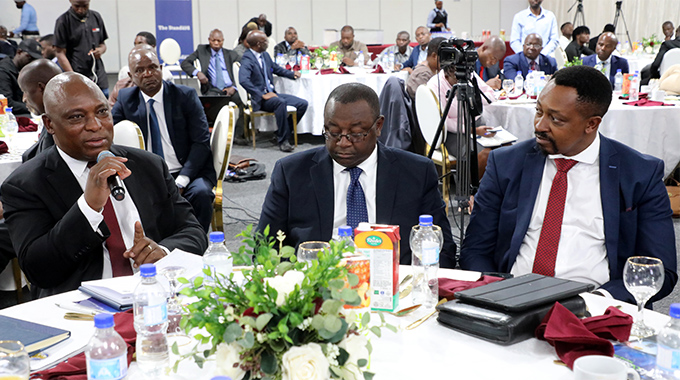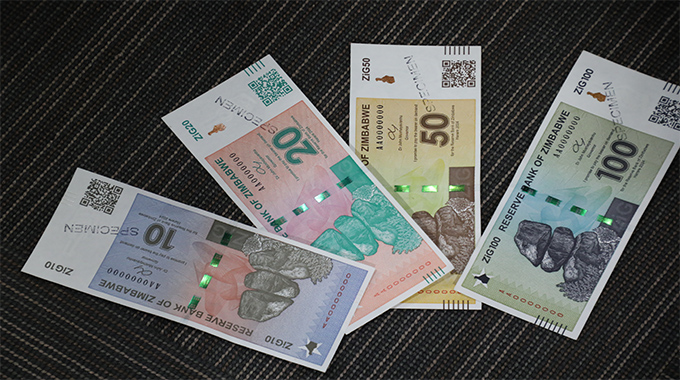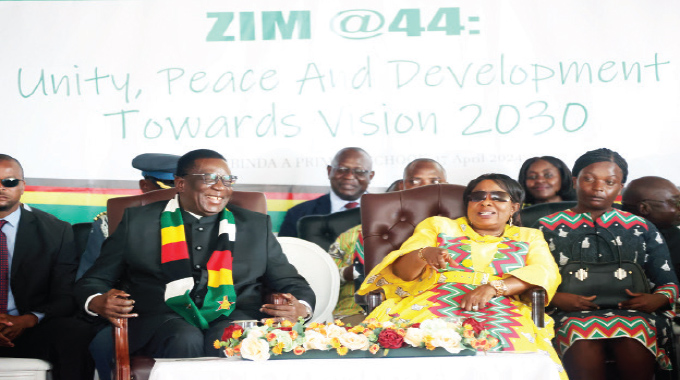RBZ corners fuel service stations: Vows to suffocate the parallel market

Mashudu Netsianda, [email protected]
RESERVE Bank of Zimbabwe (RBZ) Governor, Dr John Mushayavanhu, yesterday vowed to suffocate the speculative parallel market forces saying the newly announced Monetary Policy Statement was crafted in a manner that creates solid demand for the new Zimbabwe Gold (ZiG) currency, which will consolidate its strength and lure more players to use it.
While some doomsayers are still sceptical, with some businesses preferring to trade in foreign currency only, Dr Mushayavanhu has said the market should brace for a surge in demand for the ZiG within the next two months when businesses will be required to pay 50 percent of their tax returns for the second quarter in local currency.
The Zimbabwe Revenue Authority (Zimra) regulates the payment of cash-in-transit (CIT) on four dates during the current tax year and these are referred to as Quarterly Payment Dates (QPDs).
The first payment of 10 percent is due by March 25 of the respective tax year while the second payment of 25 percent is due by June 25 of the respective tax year.
The new structured currency, which is backed by gold and foreign currency reserves, aims to curtail inflation and restore durable macro-economic stability, with the multi-currency regime set to stay in place until at least 2030. The total amount of ZiG in circulation as of April 5, 2024 when it was introduced was 2,6 trillion.
Two weeks after its official launch, ZiG remains stable with major business players and consumers across the country smoothly conducting transactions following the successful conversion of Zimbabwe dollar balances, amid marginal gains against the United States dollar.

Addressing economists, industrialists and other stakeholders during a breakfast meeting to unpack the new MPS at the Zimbabwe International Exhibition Centre in Bulawayo, Dr Mushayavanhu said since most of the ZiG is in the formal banking system, it will be difficult for the black market to thrive once the rush for the payment of QPDs begins in June.
“Most of the ZiG is in the banks and they are the ones that are going to be selling the ZiG to anyone who wants to buy it,” he told the gathering.
“We have about US$150 million worth of QPDs to be made in ZiG but we have about US$80 million worth of ZiG in circulation.
“So, the black market cannot thrive under such an arrangement because if I am holding my ZiG I will not sell to the black market for them to make a profit, I would rather make a profit myself by selling it to my bank so that I can get a good rate.”
Dr Mushayavanhu said while the static exchange for the ZiG to other currencies was influenced by the gold price, going forward the exchange rate is going to be market-determined.
“When the demand for ZiG increases, it means the ZiG strengthens. The exchange rate is not determined by the central bank but by the market and will continue to be determined by the market going forward,” he added.
The Apex Bank boss said like any central bank, RBZ will, from time to time, intervene whenever the rate goes up.
“We intervene by either going to the market to sell the US dollars or buy them. As the central bank, we gave the Government our rough roadmap towards de-dollarisation and we are on 80-20 percent and we hope to reach 70-30 percent by year-end, maybe 60-40 percent by the end of 2025 and maybe 50-50 by the end of 2026,” said Dr Mushayavanhu.”
Zimbabwe is trading at between 80 and 85 percent in US dollars and 15 to 20 percent in local currency.

“If you look at the proportion of the US dollar and local currency in the local market, they are going to create a lot of demand for ZiG come this QPD.
“Every quarter Treasury collects about US$300 million from QPDs and 50 percent of that money will be required in ZiG, creating the demand for the local currency come June, and this will strengthen it,” said Dr Mushayavanhu.
Responding to questions from the floor on the issue of fuel being sold exclusively in US dollars, the RBZ Governor said: “Service stations are going to find themselves with no option but to sell in ZiG because they are also taxpayers. Come June when they are required to pay 50 percent of their QPDs in ZiG, where will they get the ZiG from when they are selling 100 percent in USD?”
Dr Mushayavanhu said under normal circumstances, all domestic transactions should be in local currency.
“We, however, do understand our current position where 80 percent of transactions are in US dollars and 20 percent in ZiG,” he said

ZiG notes
Dr Mushayavanhu said for one to exchange ZiG for foreign currency through the bank, there should be a genuine and legitimate reason warranting that service.
He said US dollars are primarily meant to honour foreign obligations.
“However, if you have a genuine reason such as paying fees in a foreign university or importing raw materials or a legitimate service rendered, you can go to your bank and you will get the foreign currency,” the Governor said.
Dr Mushayavanhu urged the Bulawayo community and Zimbabweans at large to embrace the new currency.
“I came to Bulawayo so that we could, together, unpack the Monetary Policy Statement that we recently issued. Some people have said the Central Bank does not accept criticism, which is far from the truth and we are here to hear your views,” said Dr Mushayavanhu.
“As Zimbabweans let’s have constructive criticism. I am hoping that from this meeting we are going to have a meaningful dialogue. Let’s work together as Zimbabweans to make our new currency, ZiG work.”
Dr Mushayavanhu said before coming up with the MPS, the Bank consulted widely, adding that for any currency to be worth its value it has to be backed by reserves.
“The amount of money in circulation versus the reserves that we had was only a tiny fraction and hence our currency was in free fall because it didn’t have the necessary support. We then decided to come up with the idea of having a stable national currency,” he said.

Dr Mushayavanhu said in arriving at the static exchange rate, RBZ looked at the interbank that was prevailing on the day ZiG was introduced.
“Since ZiG is predominately backed and anchored by gold we looked at the prevailing gold price and using those factors we came up with a conversion factor of about 2 500 ZWL to ZiG. I have been reading on social media and people don’t believe that we have the reserves,” he said.
“On the day that we introduced ZiG, we had 2, 5 tonnes of gold, which were worth about US$185 million at the price ruling that day, and we had just over US$100 million in nostro balances, translating to a total of US$285 million.”










Comments